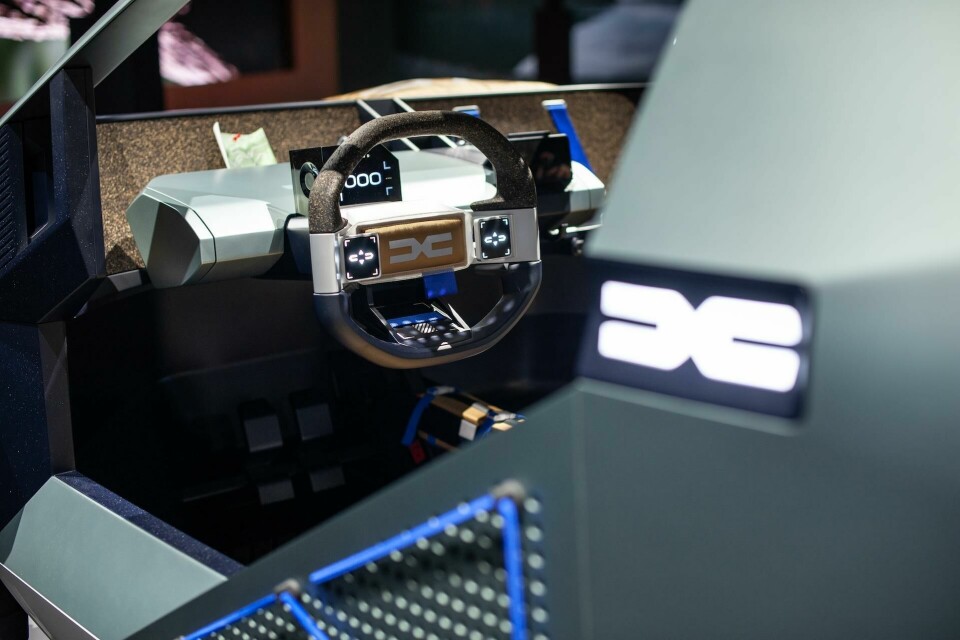
From Paris with love: a comment on French car design
Christopher Butt takes a look at the return of robustness in French car design, as illustrated by two new concept cars in the Dacia Manifesto and Citroën Oli
Heads of state are not your regular brand testimonials, and yet two car makers recently received prominent support from none other than French President, Emmanuel Macron, as he helped set the stage for Dacia and Citroën’s then-upcoming concept cars in August 2022.
Rather than praising his domestic automotive industry for its strength, prowess and success as one might expect under less exceptional circumstances, Macron’s endorsement came in the form of a warning of ‘the end of abundance’. Two months later, the French President’s stark words turned out to be far more effective an appraisal of the Citroën Oli and Dacia Manifesto concept cars than the usual flattery could ever be – since these two motor cars were not designed to distract from today’s worries, but addressing and even embracing them head-on, in both engineering and visual terms.
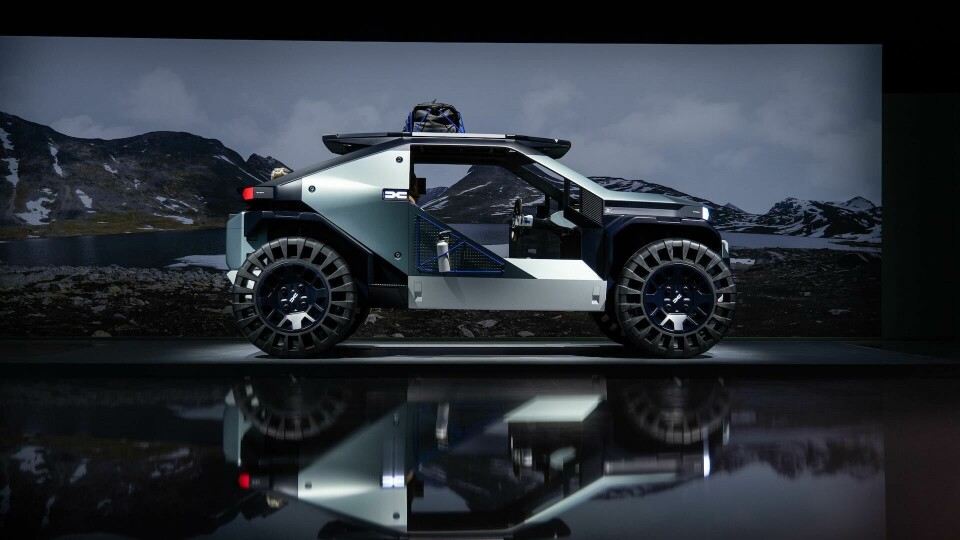
Living up to its name, the Dacia Manifesto embodies the budget-conscious brand’s ethos of rugged simplicity not in apologetic a manner, but with gusto and conviction.
Having already enjoyed the status of unsung blue-collar heroes of the car design community for some time, Dacia’s VP of design, David Durand, and his team have for the first time allowed themselves a bit of an indulgence in the form of an automotive figurehead. Or, in other words: a proper concept car, a symbolic representation of ideology and ideas, rather than a tarted-up preview of a forthcoming production model. Incidentally, this happens right after Dacia, at long last, received the logo this exceptionally strong brand has been deserving for some time, signalling the coming of age of a car maker whose inherent modesty had hitherto prevented it from communicating its success loud and clear.
The Manifesto and Oli are clearly united by the common French cultural background that has obviously informed their designs
The Citroën Oli also happens to feature a new (old) logo, but its design’s symbolism is slightly more familiar in nature, as it takes the concept of the Ami quadricyle several steps further – and also acts as spiritual heir to Fiat’s visionary Ecobasic concept car from 1999. Despite the Italian and French concept cars sharing a basic design approach, the Oli goes for a very different aesthetic that is blunter than the Manifesto’s already blatantly rugged style, and vaguely reminiscent of a cheerful toy version of the original Humvee.
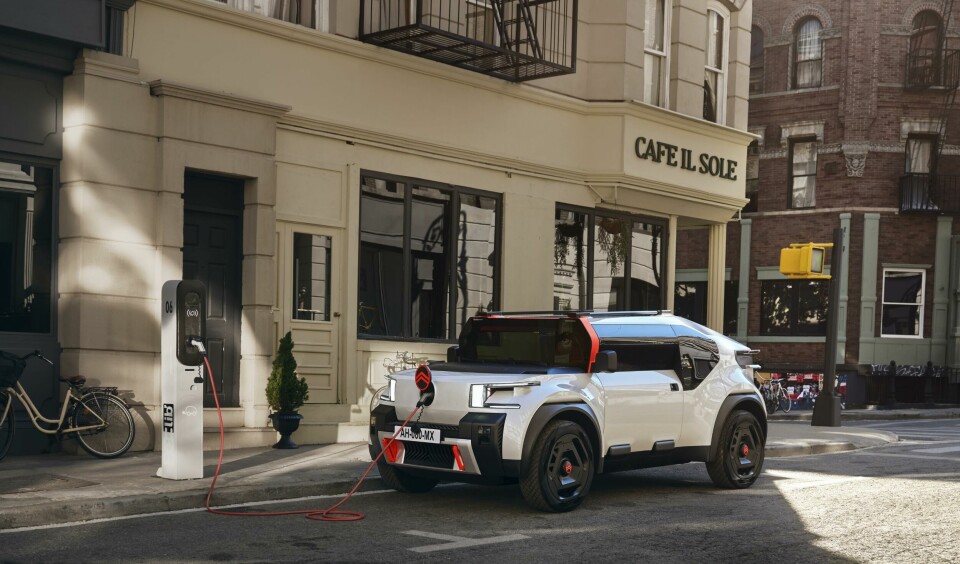
Casting aside visual differences, the Manifesto and Oli are clearly united by the common French cultural background that has obviously informed their designs. In spite of a rich history in automotive innovation and style, France has never developed an automotive fetish the way its Eastern neighbour has: cars exist to be (ab)used, rather than put on a pedestal. Consequently, just as Germany still finds itself unable to even agree on a nationwide speed limit, France benefits from a significantly more prosaic attitude towards the motor car, allowing the country to come up with automotive concepts answering regular peoples’ needs, rather than enthusiasts’ desires.
Purpose, rather than gadget-driven, Dacia’s and Citroën’s respective designs by and large ignore all the traditional stylistic cyphers (longer, wider, faster, bigger), bar one: robustness. That trait, in its unfeigned, non-Sports-Utilitarian meaning, is overdue a comeback anyway, if the automobile at large is to become serious about the pursuit of sustainability. In the Oli’s case, robustness even seems a bit overemphasised, whereas the Manifesto’s semi-military vehicle look appears perfectly consistent with its Patagonia Car flair.
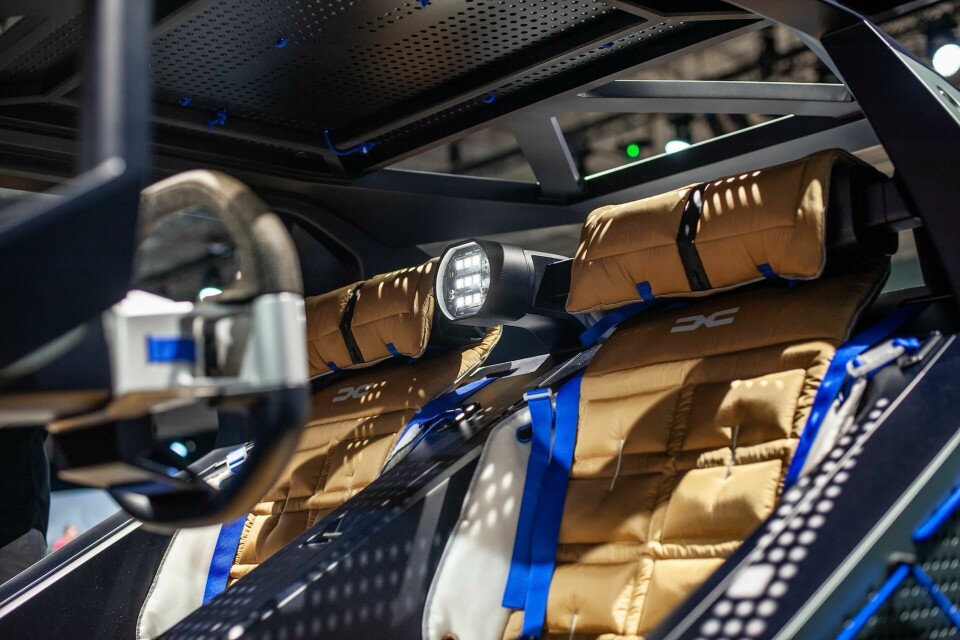
The barren, yet playful cabins of both concept cars visibly and tangibly illustrate that ‘the end of abundance’ must not be a mere euphemism for austerity. While intentionally sparse, these interiors also vividly illustrate that an absence of features hardly entails a lack of flair or visual interest. On top of that, they also prove that design quality of a car cockpit still is not measured in display-per-square-feet.
Unlike many a performance SUV’s “dominatrix lair” interior, the Oli’s cabin, for all its absence of features and luxuries, is a cheerful place
Their respective seat designs alone make for a stimulating antidote to any virtual avatar or oversized screen. In the Manifesto, those seat covers double as a sleeping bag; the Citroën’s chairs are made of just three parts, featuring a 3D-printed, breathable grid structure for leg- and backrests. The screens in either car’s cockpit are very modestly-sized and only serve basic functions, as more elaborate features are provided by the driver’s smartphone – the car returning to its roots as a motoring device, rather than a moving digital entertainment playground.
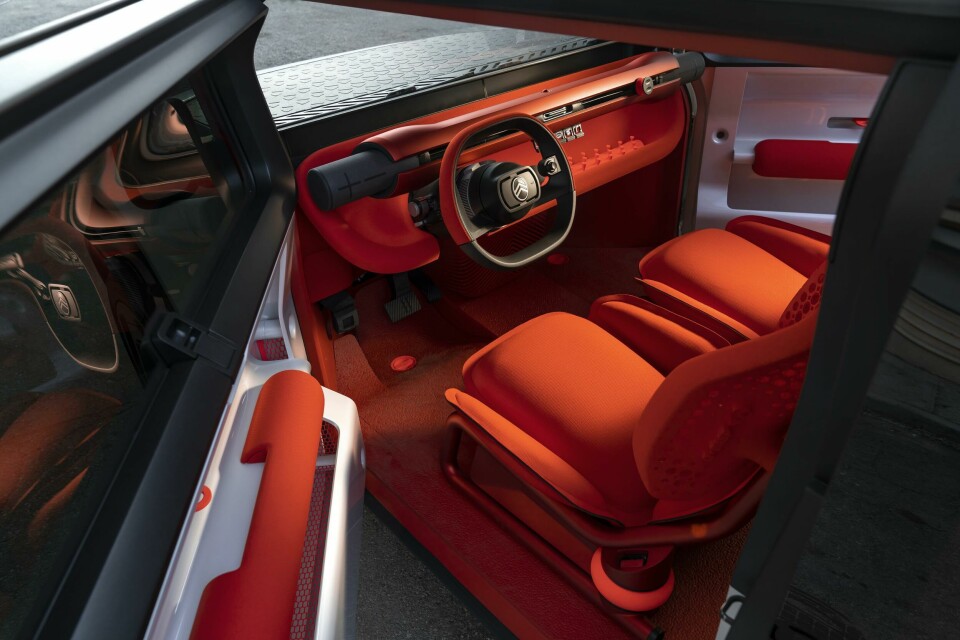
Should passengers in either car choose to direct attention away from the smartphone on their lap, they are to be rewarded by ambiences completely unlike any existing production vehicles’, since neither the Dacia, nor the Citroën make any attempts at disguising themselves as ‘premium’ cars. Plastic does not disguise itself as leather, nor silver plastic as aluminium. Dacia’s Durand recently told Car Design News how the aim was to champion its ‘Starkle’ material, in particular, which gives pre-used polypropylene a second life. These cars simply are what they are.
The interior is also where the Citroën Oli’s design truly shines. Its colour scheme and basic layout are so very refreshing amid the usual excesses of ambient lighting, displays and faux materials. The red-orange hue applied to the seats and most trim pieces provides plenty of visual entertainment all by itself and plays a vital role in the Oli’s cabin appearing clean, unpretentious and minimalist, rather than barren and glum. Unlike many a performance SUV’s “dominatrix lair” interior, the Oli’s cabin, for all its absence of features and luxuries, is a cheerful place.
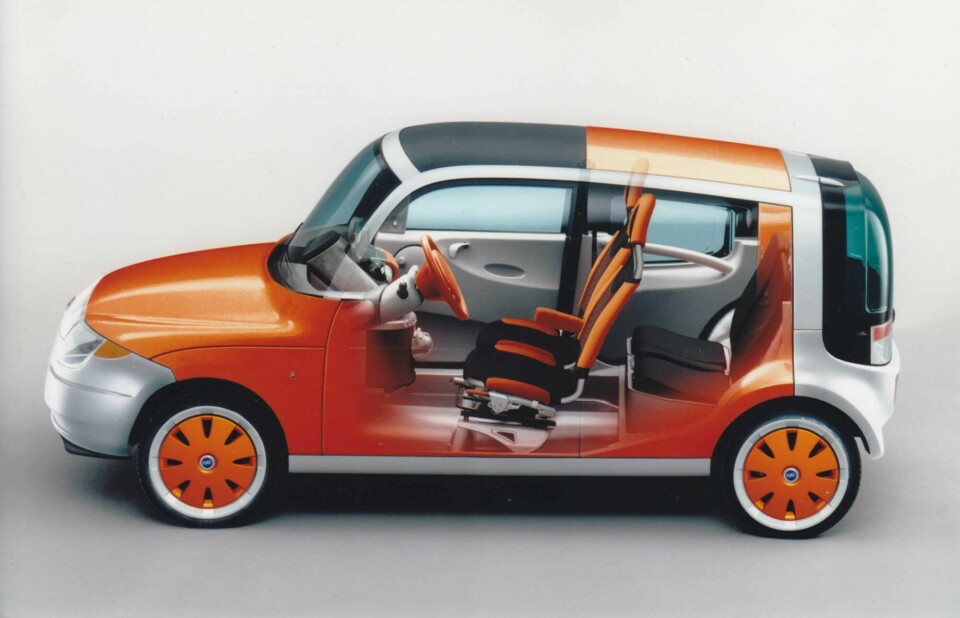
Applaudably, the Citroën cabin’s pleasing appearance is not just some welcome, albeit shallow visual statement, but – once again reminiscent of the Fiat Ecobasic – a true display of ingenuity: ease of manufacture and recycling being its guiding motives, proving once again that design indeed is the dress of thought. Often for worse, in this case most certainly for the better.
By the way: the aforementioned AM General Humvee obviously lives on not only in the Citroën Oli’s roofline, but also in a recently introduced, electrically powered heir. That car, the Hummer EV, weighs 4,103 kg. The Oli is claimed to come in at a quarter of that. The end of abundance is not quite upon us.



